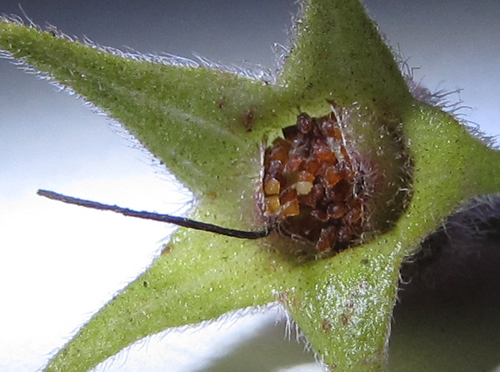Sinningia schiffneri
This shrubby sinningia has two forms in cultivation. One has plain green leaves and stems, and the other (shown in the picture) has red petioles and red veins on the leaf backs. The latter form is more attractive. Attractive vegetative growth is important because S. schiffneri doesn't produce a lot of flowers, and the ones it does produce are relatively small.
The plant does not branch readily. Almost all the branching is at or near the base. This is in contrast to its relative, Sinningia gerdtiana, which branches at every opportunity. These two species are the only sinningias which never form tubers. Their next closest relative is the bizarre Paliavana plumerioides.


